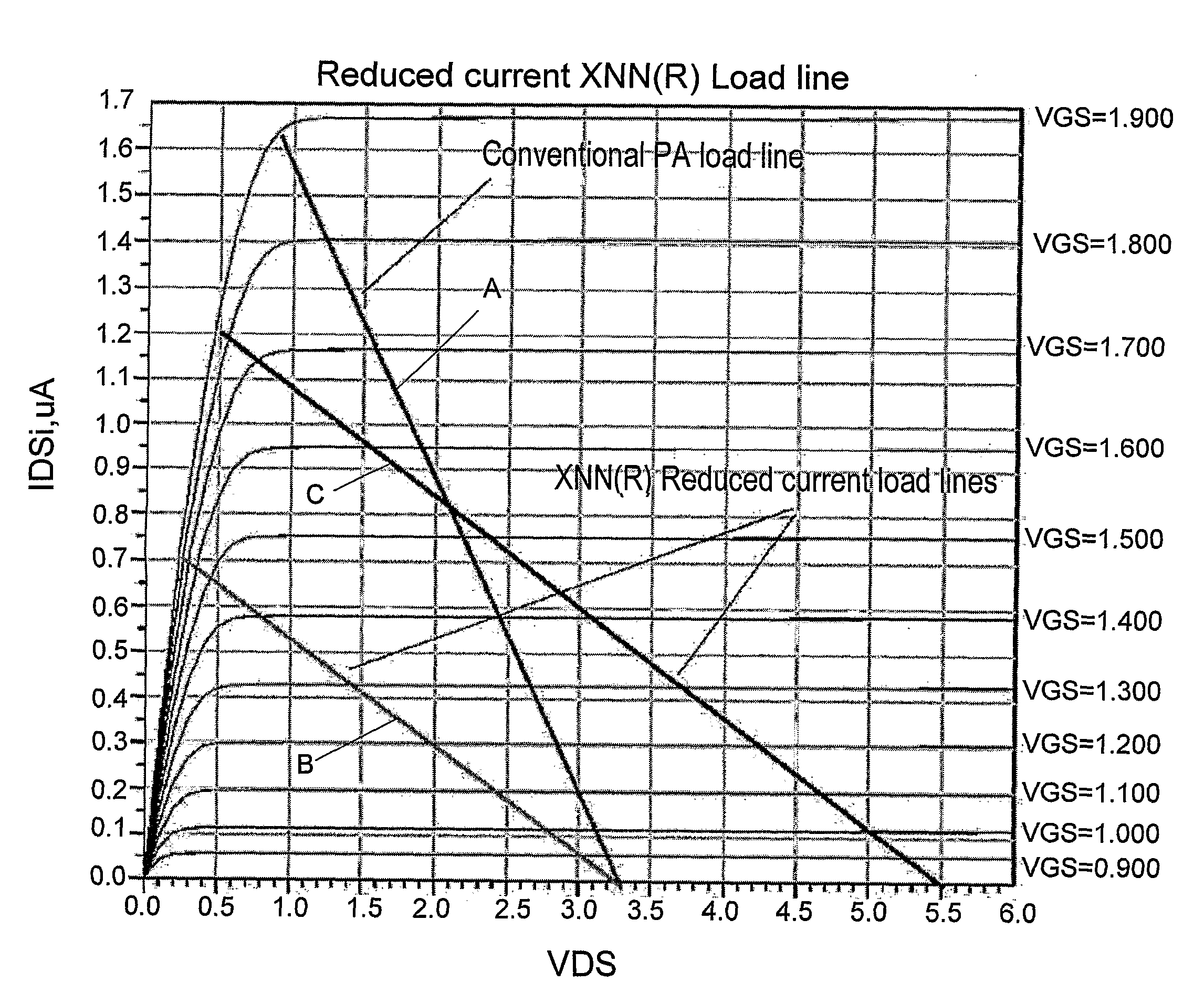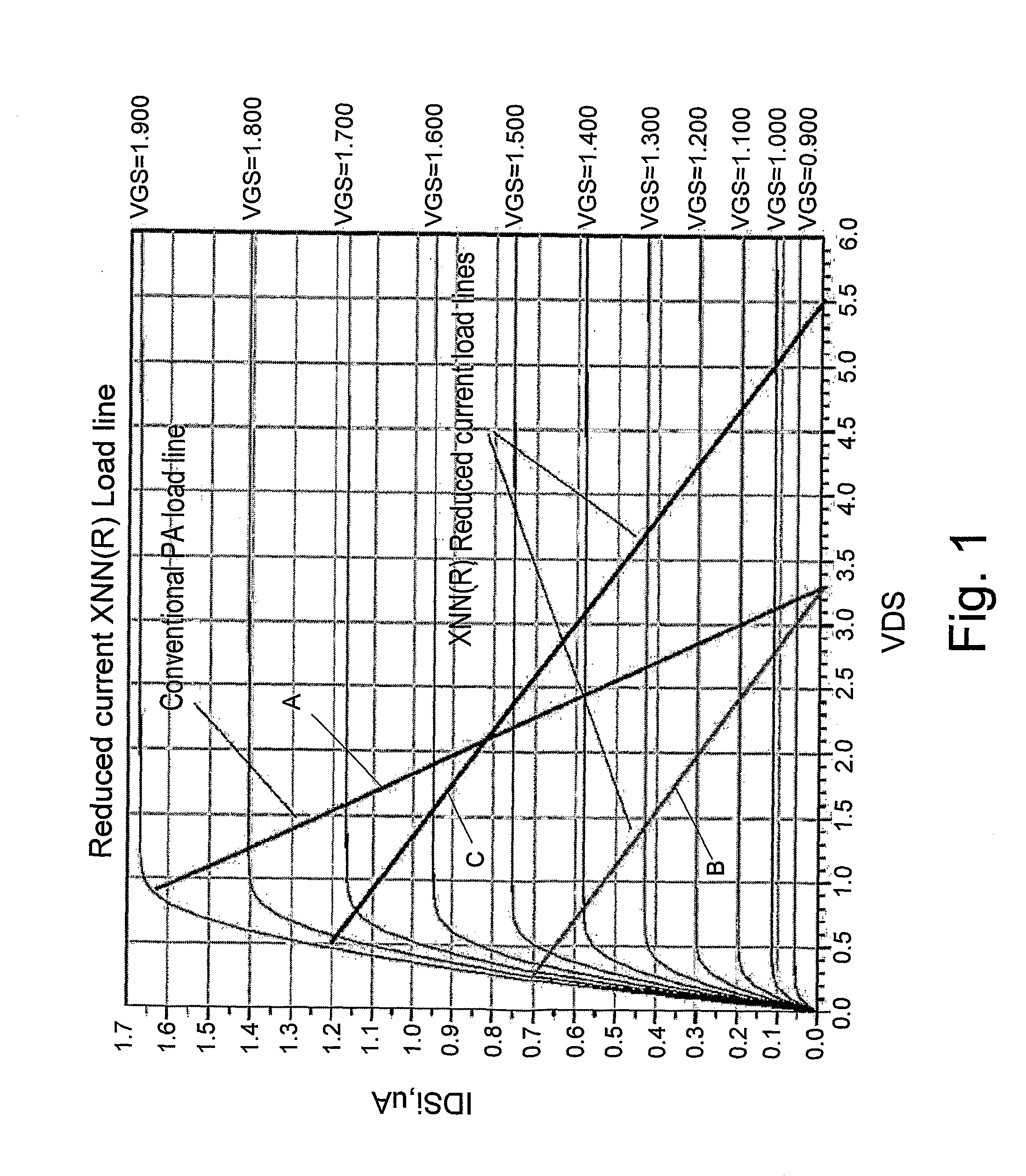Method and apparatus for reducing current consumption of MIMO systems
a technology of current consumption and mimo system, applied in diversity/multi-antenna system, spatial transmit diversity, gain control, etc., can solve the problems of limiting the tolerable power consumption of wireless portable devices, limiting the output power to certain levels, and reducing the current consumption. , to achieve the effect of increasing the efficiency of a mimo system and reducing the current consumption
- Summary
- Abstract
- Description
- Claims
- Application Information
AI Technical Summary
Benefits of technology
Problems solved by technology
Method used
Image
Examples
examples
[0028]For specific MIMO system with up to four amplifier arms, the total power has been designed to stay constant for all operational modes, as appears for example, in the Wi-Fi IEEE 802.11n standard. For the case where only one amplifier operates (SISO mode), the power amplifier achieve highest efficiency using XNN® technology. If more arms are operating, the power of each of them is reduced by factor of the number of arms. Each of the MIMO arms was tuned to give maximum efficiency during MIMO operation. An adaptive load line control can be also applied on each of the MIMO arms if required.
[0029]A MIMO W-LAN system working according to the IEEE standard 802.11n with up to four transmit paths is described. Due to the to total output power limitations for systems operating in the unlicensed frequency bands, the total output power of such a MIMO system is limited to 100 mW (20 dBm).
[0030]If there are four Power Amplifiers (PAs) with maximum output power of 20 dBm for each PA, and with...
PUM
 Login to View More
Login to View More Abstract
Description
Claims
Application Information
 Login to View More
Login to View More - R&D
- Intellectual Property
- Life Sciences
- Materials
- Tech Scout
- Unparalleled Data Quality
- Higher Quality Content
- 60% Fewer Hallucinations
Browse by: Latest US Patents, China's latest patents, Technical Efficacy Thesaurus, Application Domain, Technology Topic, Popular Technical Reports.
© 2025 PatSnap. All rights reserved.Legal|Privacy policy|Modern Slavery Act Transparency Statement|Sitemap|About US| Contact US: help@patsnap.com


